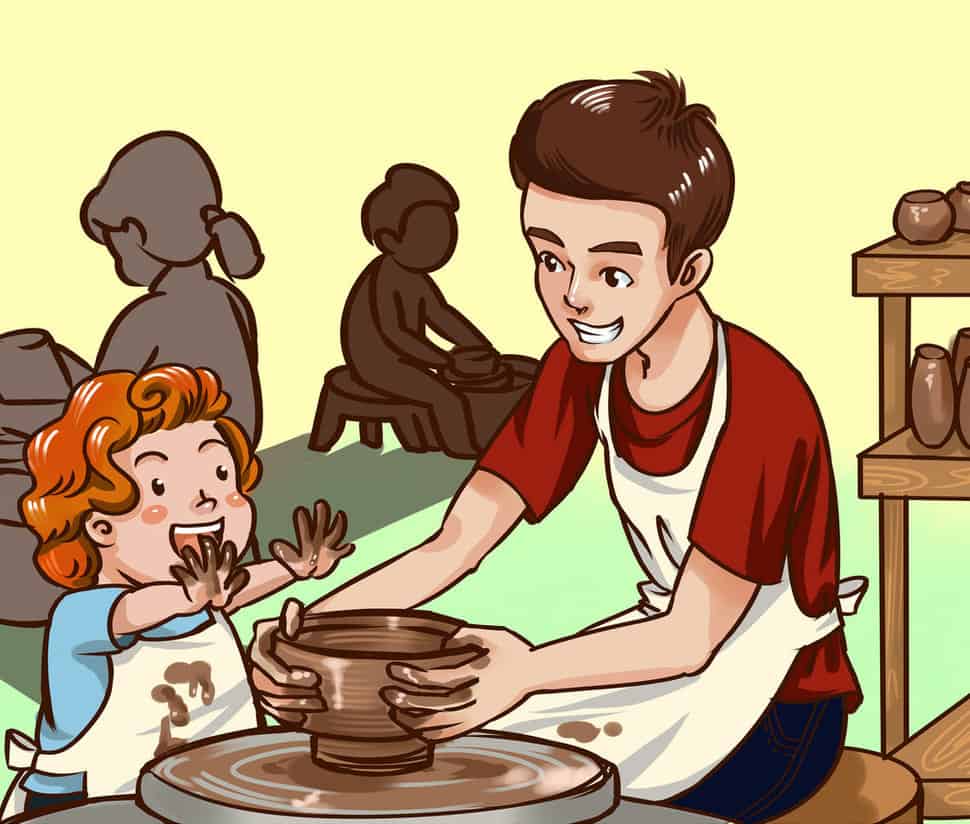I am not Molly Jensen or Demi Moore, and this was certainly not Ghost. Walking into a drop-in clay class on the lower level of the Gardiner Museum last Wednesday, I saw six clay-wheels and some tables with tools laid across their surfaces. I sat down at one of these tables and eagerly waited for the class to begin. I hadn’t used clay since I was in elementary school, but I was excited to take a break from studying and worrying about how I was going to placate my recently-uncooperative laptop.
Waiting for our instructor to formally begin the workshop, I greeted the other members of my table group: a young woman who expressed her determination to make a symmetrical vase by hand, a bubbly 40-something who was trying to convince her reluctant mother to join in on the class, and a quiet, well-dressed man who had brought along two recently fired pieces that looked like miniatures of Frank Gehry’s Guggenheim Museum in Bilbao.
After everyone was seated, our instructor, Mark, introduced himself and explained that he’d be making rounds after giving those on the wheel a tutorial. All of the non-wheel participants seemed to know what they were doing, which was lucky for them, as the workshop did not include any formal instruction. I lined up behind the more experienced participants, cut myself a piece of clay, and went to work.
After taking my piece, I sat down at my table and began to massage the clay. I had no idea what I was doing. I rolled it into a ball. I unrolled it. I flattened it and pulled it apart into little pieces. It wasn’t until I looked over at the well-dressed man who was making clean, equally-sized slabs for his next architectural figurine that I began to find my path. I asked him how he made his geometric slices, and he explained that he flattened the clay to a thickness he liked, let it dry for a bit to make it more solid, and then cut it up with a knife. I followed suit, but decided to tear some of my pieces in order to make a wall with rough shapes projecting out from it.
While in the process of finishing my work, I noticed a woman talking to our instructor, and I soon realised that she was an art teacher from my old high school. I called out her name and she greeted me excitedly. Although my table-mates were less talkative, we did take care to support one another’s efforts. I told the well-dressed man that I liked the new pieces that he was making, and that they looked “architectural.” He thanked me and told me he was an architect. He in turn told the 40-something woman that he admired her circular, fountain-like creation, and she said that the young woman had done a good job at creating a symmetrical vase. The girl with the vase didn’t complete the compliment circle.
At about a quarter to eight, Mark asked us to clean up our places, wash the tools, wipe down the tables, and decide whether or not we wanted our pieces fired in the kiln for pick- up the following week. I looked at my strange, lop-sided wall and decided to pay the extra $5, on top of my $12 student ticket, to fire my piece. I figured that it would give me an opportunity to come back and try the clay workshop again, and if it didn’t, I would at least have a memento of the experience. I handed my $5 to Mark, who told me that he liked my lop-sided wall. The compliment circle had become a compliment oblong.
When I was leaving the museum I stopped near the front desk by a section of the currently exhibited “Fragments of Self” by artist Susan Low-Beer. It was a collection of small, detailed ceramic heads each with a different colour theme and pattern carved into its clay skin. The heads stared back at me with eerie brilliance from the dimly lit glass case. I wonder how many drop-in clay workshops Low-Beer attended.
The Gardiner Museum, 111 Queen’s Park, offers two-hour drop–in class workshops throughout the year on Wednesday, Fridays, and Sundays.


